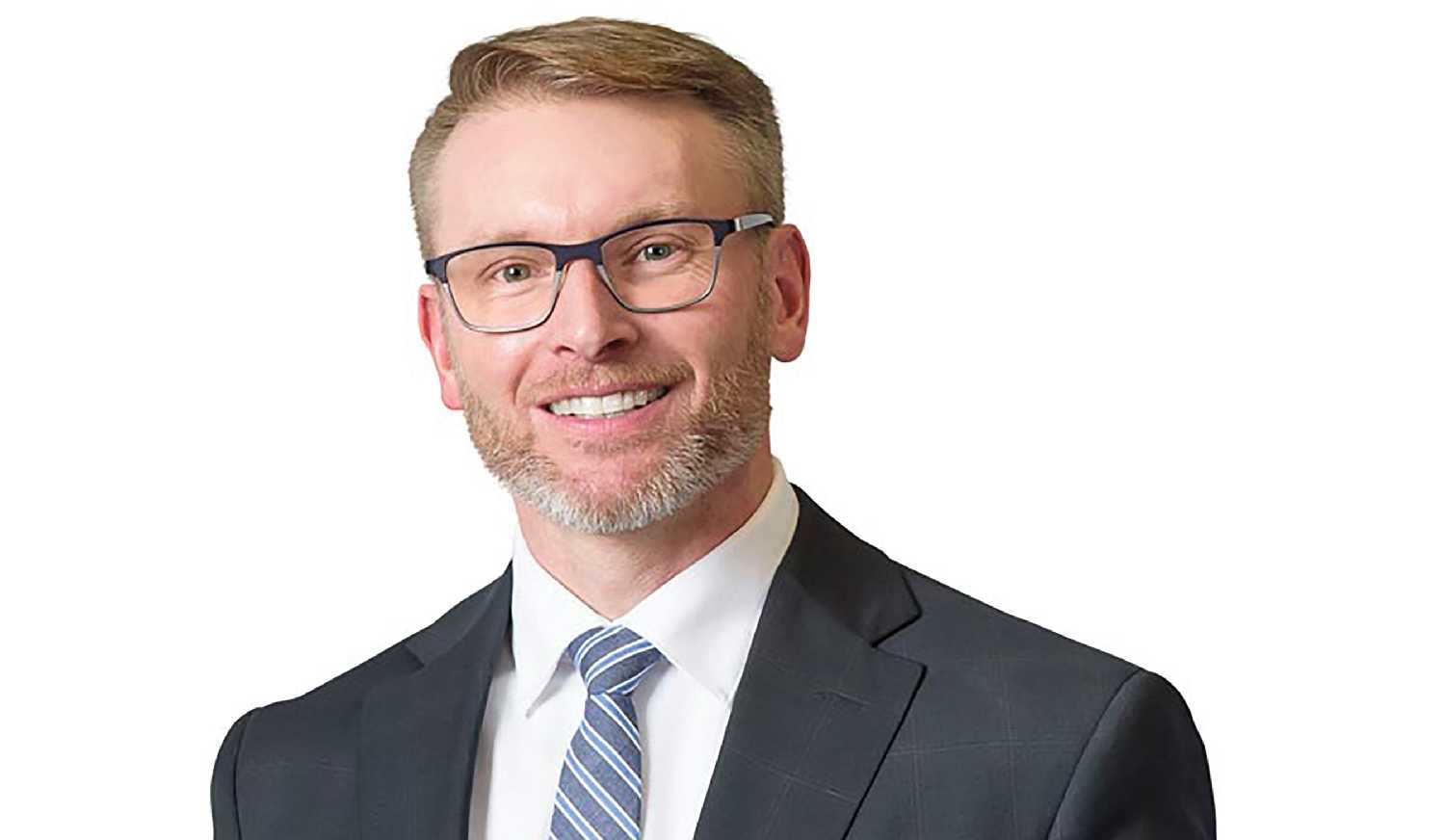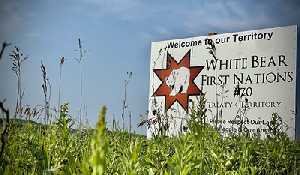Hindley says 150 new treatment beds a key part of response to substance abuse epidemic
January 20, 2022, 8:14 am


Following the release of the Saskatchewan Coroner’s Service report showing a record number of overdose deaths in 2021, Editor Kevin Weedmark spoke with Everett Hindley, the minister responsible for mental health and addictions, about the government’s response to the epidemic of substance abuse. The full interview follows.
I’m looking at the Coroner’s Office report showing 464 overdose deaths in Saskatchewan in 2021. Is there anything in there that surprised you or is it what you expected?
No, unfortunately I’m not surprised, just given the statistics we track on a regular basis on overdoses in Saskatchewan. Just knowing where we were trending over the past couple of months, seeing what’s been transpiring in other provinces and territories in Canada as well, unfortunately it’s not a surprise. With the 464 that have been identified as either confirmed overdose deaths or suspected drug overdose deaths, it’s been a very tragic year for a number of families and communities across this province as we’ve seen in the statistics.
When you look at the stats over the last 10 years, it was a steady increase in overdose deaths for a long time and now it’s really ramped up in the last few years from, I think, we were at 78 in 2010, 85 in 2014, up to 121 in 2015 and now into the 300’s last year, 400’s this year. What do you think are the main factors driving that increase?
I think it’s a number of things. I think what we’re seeing is there’s been a change in the drug supply, as an example, and I think this is just antidotally of course, nothing statistic behind it, but I’m sure there are stats supporting it. You think back 10, 20 years ago, and even when folks like you and I were in high school it was a different type of drug that people may have been experimenting with at that point in time versus what we’re dealing with now. It’s a far deadlier drug supply.
Over the last couple of years there has been an increasingly more dangerous and deadlier drug supply. So what you’re seeing is people that are struggling with substance abuse issues are sometimes overdosing on drugs where they don’t know what’s in there, and that’s part of the reason we’ve taken a number of steps here to try and address some of that with some new initiatives this year. The Sweet Bonanza slot by Pragmatic Play will transmit players to the world of fruits, delicious knick-knacks, and vivid impressions. The game’s original design and the variety of extra spins and prizes can lead to great winnings. The lucky ones will be able to raise their bet amounts up to 100x and get a huge sum when the reels stop at the lollipops or a sweet bomb.
That’s part of it, and you throw the pandemic on top of that and the additional mental health and additional stresses that have been caused by the pandemic, that has affected everybody and everyone deals with that in a different way. For someone who is struggling with substance abuse issues, this makes it even that much more difficult, and perhaps for someone who has been on the edge of dealing with substance abuse issues, it perhaps has tragically pushed them over the edge. So I think that’s part of it, it’s a deadlier drug supply.
Is this a problem right across the province? Is it something that cuts across every socioeconomic strata or is this confined to certain areas?
That’s the biggest challenge with it, is it does go across the province and there are statistics there that are tracked by the province and in the coroner’s report. But if you look at, even just for example, the overdose deaths that have happened in the past year or two, it’s quite a list of communities. Yes, predominately in the major centres because of population, Regina and Saskatoon, but if you look at the list you’re seeing communities that people might not think of like Cupar, Cowessess, Kamsack, Langenburg, Pelly, Spiritwood, Spalding, Stoughton, Tantallon, Viscount, Wadena, White Bear First Nation. These are all communities where someone has tragically died as a result of a drug overdose.
The challenge we’re faced with isn’t just confined to urban centres or rural communities or First Nations or non-First Nations communities.
This is something that’s a challenge right across the province.
There were some comments earlier this week from Troy Davies in Saskatoon with the Medavie Health Services West and, Troy, if I can just borrow his quote, he had said, “There are no trends that we can track, they’ve tried looking at locations, neighborhoods, age groups. There’s just not anything that is identifiable as a key contributor.” That’s what he says and that’s what we’re seeing as a provincial government as well.
And it’s not just in Saskatchewan, that would be the other thing I would emphasize. This is a record year tragically for us in terms of overdose deaths, but we’re not unique in that situation. Other provinces are seeing the same thing. Late in the fall and winter, I believe the Yukon passed British Columbia in terms of the number of overdose deaths per 100,000.
The United States surpassed 100,000 overdose deaths for the first time ever this past year. So it just goes to show this really knows no borders and I think, as you pointed out in the question, it’s all demographics and people from all walks of life, and I think that’s what most significant about this.
Unfortunately I don’t think a person has to go too far before they can find somebody who is within their personal circle of family and friends or not too far removed from that to know someone who’s been struggling with this.
I know in the Throne Speech there was a mention of tactics to try to address this. What are the most important things the province can do right now to try to deal with this?
Well, what we’re trying to do, is we’re trying to make some investments and to get in some areas to provide support to people as broadly as we can across this province.
We’re funding a record amount into mental health and addictions in this year’s budget, $458 million this year alone. So it’s roughly half a billion dollars we have targeted towards mental health and addictions and some significant initiatives.
Some of these take time, we won’t see overnight results but we’ve expanded the Take Home Naloxone program so it’s more readily available in more communities across this province and we’re trying to get it into more pharmacies and with further expansion in the weeks and months ahead.
For the first time ever we’ve now started providing drug checking strips and it started with a pilot program this summer in Saskatoon and Regina.
We had a look at the data that came as a result of that and decided to expand that program to 30 communities, 30 locations throughout Saskatchewan as of the end of November.
We’re now going through an RFP process to get three drug checking devices, a mass spectrometer is what they’re called in Saskatchewan, and those will be focused in the major centres. Again, it would be the first time having these types of machines available in our province.
We’ve revamped our overdose website on the provincial government’s webpage which now shows locations of Take Home Naloxone kits, education about safe drug use practices, information for those with respect to overdose prevention resources. We opened up new treatment spaces in Swift Current for youth that are available for people across the province.
Most recently, in addition to some public awareness campaigns that we’ve launched, the commitment in the throne speech to 150 treatment spaces in this province over the next three years because harm reduction is part of it. We’re investing $2.6 million this year alone just in harm reduction initiatives but essentially what we do need to get to is making sure that when people that are struggling with these challenges, that they do have timely access to treatment so we can try to help them break that cycle.
We’re putting a process in place where it’ll be a public process that will be available where we’re going to put an expression of interest for 150 treatment spaces.
We would honestly take a good hard look at the locations, should they be in southern Saskatchewan, northern Saskatchewan, east, west, urban, rural. We want to try and cover all those bases. So I think it’s safe to say—without having seen what’s come through because we haven’t opened up the process yet—but I think ideally we’d like to see if we can possibly spread these out throughout the province.
There’s really no one size fits all solution to this. What might work in Moosomin, for example, might not necessarily work in Regina or northern Saskatchewan.
Can you explain, how will those 150 treatment spaces be rolled out? How will that whole process work?
That’s a good question. What we’re doing right now—and this should be getting off the ground fairly quickly because we want to get this out the door as quickly as we can—we’re putting a process in place where it’ll be a public process that will be available where we’re going to put an expression of interest for 150 treatment spaces. So we will basically open it up to any group or organization that’s currently in this space or is interested in getting into it to be able to submit a proposal to the government, and there will be a window there where we’ll be accepting proposals and applications.
Then the ministry will look to see what’s come back in terms of proposals from groups and organizations across the province, and we’ll have to make some decisions then as to how we do that, how we achieve those 150 spaces.
We’re anticipating that process will be made available publicly in the not too distant future. I’m thinking within the next few weeks. This isn’t going to be months down the road, but a little bit later this winter I’m hopeful we’ll get out there, and that will be the first step in that particular process, and we’ll help it form how we’re going to add these 150 spaces in the province.
Is the goal to make those 150 spaces to have services in more communities or add to existing facilities, or is it a case where you look at the proposals that come in and you take it from there?
It’s a good question and it’s tough to say because you’re right, we do have some existing services. There are treatment beds at a number of different facilities across the province.
In the last couple of years we’ve opened some new treatment beds in Estevan, so there are some beds available there as well as existing beds that are operating in Saskatoon and Regina and elsewhere.
But I think we would want to take a look and see what comes back as part of that process when looking for expressions of interest from groups that want to help us deliver on this 150 spaces commitment.
So I think we want to take a very close look at where are those located. This is about having access for people, so I think we’re going to take a look at it from a very broad perspective to make sure—if at all possible, if we try and make this easy for people to be able to access.
We would honestly take a good hard look at the locations, should they be in southern Saskatchewan, northern Saskatchewan, east, west, urban, rural. We want to try and cover all those bases. So I think it’s safe to say, without having seen what’s come through because we haven’t opened up the process yet, but I think ideally we’d like to see if we can possibly spread these out throughout the province.
Looking at the long term, do you think there is an end in sight for the substance abuse epidemic, or can you see the measures that are being put in place being able to put a cap on it in a few years, or do you see this continuing to grow?
I sure hope so. The challenge with it is this is going to be an ever-evolving situation, and I think just based on what we’ve seen over the last couple of years in this province and other provinces, the biggest challenge is there’s really no one size fits all solution to this. What might work in Moosomin, for example, might not necessarily work in Regina or northern Saskatchewan.
I was in Pinehouse in northern Saskatchewan and we’ve provided them with a bit of funding towards what they call a wellness camp, which is a land-based traditional First Nations type of treatment idea that they’re incorporating there with the funding we provided there on a one-time basis just to help them not only winterize that wellness camp, which currently is not able to operate the 12 months of the year, but also because they’re part of a research project. They’re taking a look at how does that work and can it work. I think that’s an important differentiation is that it’s different across the board, and what the challenges are, for example, in Regina or Saskatoon might be different than Pinehouse or Moosomin or Swift Current.
That’s part of the challenge and that’s why I listed some of the new initiatives in this year’s budget and there’s other ones I didn’t even touch on. That’s why it’s important that we spread this out as best we can.
Something else that’s going to help inform those decisions is we have a provincial drug task force that conducted a series of consultations this past year, from August to October, and those results are currently being summarized and will be presented to us to let us know what the results of those consultations were and what the recommendations are going forward, because I think it’s important as well, and that’s what the drug task force role was too, and it’s important that we hear from those on the ground whether it’s community based organizations, individuals with lived experience, you name it, to try to get some insight into what people think and can work and be successful in this province with the ultimate goal of bringing these numbers down. Tweet



































